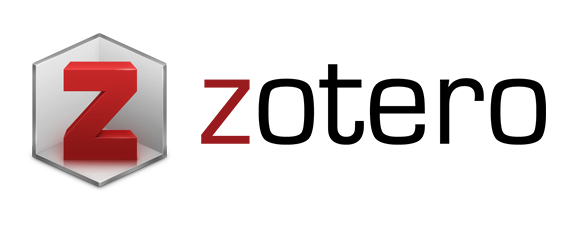Evaluating Social Technology Utilization on Employee Performance Using Positivism Paradigm
Abstract
Keywords
Full Text:
PDFReferences
J. Zhu, “The Internet, social media and citizen politics,” PhD thesis, University of Nottingham, Dec. 2021.
Z. Ardi and S. A. Putri, “The analysis of the social media impact on the millennial generation behavior and social interactions,” Southeast Asian J. Technol. Sci., vol. 1, no. 2, Art. no. 2, pp. 70-77, Nov. 2020, doi: 10.29210/81065100.
P. Hanafizadeh and S. Shafia, “Appropriate Social Media Platforms Commensurate with the Maturity of Organizations,” J. Telecommun. Digit. Econ., vol. 9, no. 3, Art. no. 3, pp. 12-57, Aug. 2021, doi: 10.18080/jtde.v9n3.421.
M. H. Jarrahi and S. Sawyer, “Social Technologies, Informal Knowledge Practices, and the Enterprise,” J. Organ. Comput. Electron. Commer., vol. 23, no. 1-2, pp. 110-137, Jan. 2013, doi: 10.1080/10919392.2013.748613.
A. Waal, “Employee quality: A requisite for becoming a high‐performance organization,” Employ. Relat. Today, vol. 39, no. 3, pp. 37-42, Sep. 2012, doi: 10.1002/ert.21375.
D. Dabrarodni and V. Belаkrylаva, “Convergence of Information and Social Technologies in the Digital Age,” Russ. J. Philos. Sci., vol. 64, pp. 71–92, Nov. 2021, doi: 10.30727/0235-1188-2021-64-5-71-92.
S. Pelevin, “Features and risks of the social technologies implementation of Modernity,” Humanit. Soc. Sci., vol. 80, no. 3, pp. 18–29, Jul. 2020, doi: 10.18522/2070-1403-2020-80-3-18-29.
Т. Безугла, “Social technologies to provide the stability of personnel of recreational companies,” in Proc. Sci. Works Cherkasy State Technol. Univ. Ser. Econ. Sci., pp. 68–74, Jun. 2019, doi: 10.24025/2306-4420.0.53.2019.172370.
J. Kohnen, “Open Leadership: How Social Technology Can Transform the Way You Lead,” Qual. Manag. J., vol. 18, no. 2, pp. 61–62, Jan. 2011, doi: 10.1080/10686967.2011.11918315.
S. Klososky, “Social technology: the next frontier,” Financ. Exec., vol. 28, no. 4, pp. 40–46, May 2012.
P. Ronning, “The organization as social technology,” Hosp. Technol. Ser., vol. 15, no. 2, pp. 10–2, Mar. 1996.
U. Raman, “Human Resource Management System,” Int. J. Econ. Manag. Stud., vol. 7, pp. 148–150, Jul. 2020, doi: 10.14445/23939125/IJEMS-V7I7P118.
A. Simamora, “Capital Structure and Performance: Examination of Managerial Ability as Moderating Role,” Asian Acad. Manag. J. Account. Finance, vol. 17, no. 1, pp. 191–224, Jun. 2021, doi: 10.21315/aamjaf2021.17.1.7.
N. Ashraf and T. Javed, “Impact of Social Networking on Employee Performance,” Bus. Manag. Strategy, vol. 5, no. 2, pp. 139-150, Aug. 2014, doi: 10.5296/bms.v5i2.5978.
E. Mooi and M. Sarstedt, “Hypothesis Testing & ANOVA,” in Market Research, pp. 153-214, Jan. 2014, doi: 10.1007/978-3-642-12541-6_6.
M. Q. Huda and H. Hussin, “Evaluation model of Information Technology innovation effectiveness case of higher education institutions in Indonesia,” in 2016 International Conference on Informatics and Computing (ICIC), Oct. 2016, pp. 221–226. doi: 10.1109/IAC.2016.7905719.
P. Panjaitan and A. Prasetya, “Pengaruh social media terhadap produktivitas kerja generasi millenial (Studi Pada Karyawan PT. Angkasa Pura I Cabang Bandara Internasional Juanda),” J. Adm. Bisnis, vol. 48, no. 1, Art. no. 1, pp. 173-180, Aug. 2017.
I. Leftheriotis and M. Giannakos, “Using social media for work: Losing your time or improving your work? ,” Comput. Hum. Behav., vol. 31, pp. 134–142, Feb. 2014, doi: 10.1016/j.chb.2013.10.016.
M. Q. Huda and N. U. Sa’adah, “Measurement model of information technology implementation effectiveness,” in 2014 International Conference on Cyber and IT Service Management (CITSM), Nov. 2014, pp. 21–24. doi: 10.1109/CITSM.2014.7042168.
DOI: https://doi.org/10.15408/aism.v5i2.22978
Refbacks
- There are currently no refbacks.

This work is licensed under a Creative Commons Attribution-ShareAlike 4.0 International License.
EDITORIAL ADDRESS:
Department of Information Systems, Faculty of Science and Technology,
Universitas Islam Negeri (UIN) Syarif Hidayatullah Jakarta
Faculty of Science and Technology Building, 3rd Floor, 1st Campus, Universitas Islam Negeri (UIN) Syarif Hidayatullah Jakarta
Jl. Ir. H. Juanda No. 95, Ciputat Timur, Kota Tangerang Selatan, Banten 15412, Indonesia.
Tlp/Fax: +622174019 25/+62217493315.
E-mail: aism.journal@apps.uinjkt.ac.id, Website: https://journal.uinjkt.ac.id/index.php/aism

This work is licensed under a Creative Commons Attribution-ShareAlike 4.0 International License.
Applied Information System and Management (AISM) | E-ISSN: 2621-254 | P-ISSN: 2621-2536
https://journal.uinjkt.ac.id/index.php/aism






